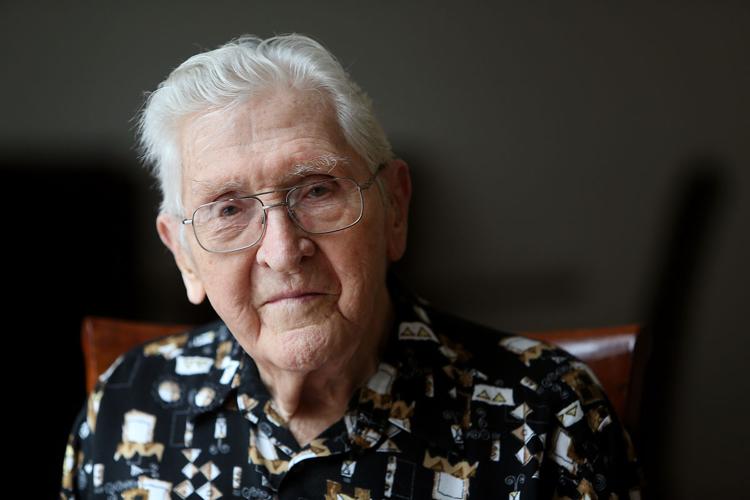John “Jack” Dyke spent two years in the Navy.
Still, he never learned to swim.
Dyke, 94, remembers standing on a platform at the U.S. Naval Training Station in Sampson, New York, swaddled in a life vest, when he was told to jump into a pool.
He did. And, as he floundered in the water, his superior officers were surprised.
“They said, ‘You can’t swim!’” Dyke recalls. “I didn’t even think about it. I just jumped.”
Born and raised in Boston, Dyke was comfortable around water, just not in it.
The hard-working newlywed pulled 12-hour shifts seven days a week in the shipyards. When he was drafted for World War II, he wasn’t thrilled with his Army assignment. Luckily, when he went to report, a friend’s father, who was with the Navy, happened to there as well.
 |
“I don’t want the army,” Dyke recalls telling him.
“OK, you got the navy,” he said.
And that was that.
Dyke, a straight talker who loves his weekly poker games, shipped out for the Philippines in 1944, on a Liberty ship with a bunch of civilians. He manned the gun mounts on the 45-day journey that included one nighttime near miss with another boat and a mine that came way too close.
“It was an experience,” says Dyke, who’s undergoing treatment for lung cancer and lives in a federally subsidized apartment on the east side.
A shipfitter, Dyke worked on the small island of Manicani, where the Seabees had built a major naval repair facility. Dyke and his fellow crew members worked on dry docks anchored off the island.
“It was hot, hotter than hell,” Dyke says. “You couldn’t touch nothing. The heat would warp the damn rails.”
 |
Dyke spent his free time writing letters home to his bride, Mary. “I had writer’s cramp from writing back and forth so much,” he recalls.
Once he was honorably discharged from duty in 1946, Dyke went back to Boston and started a family. He left his shipyard days behind him and got into the shoe business instead.
“It didn’t do me any harm,” Dyke, a great grandfather, says of his time in the service. “I guess it did me more good than harm.”






